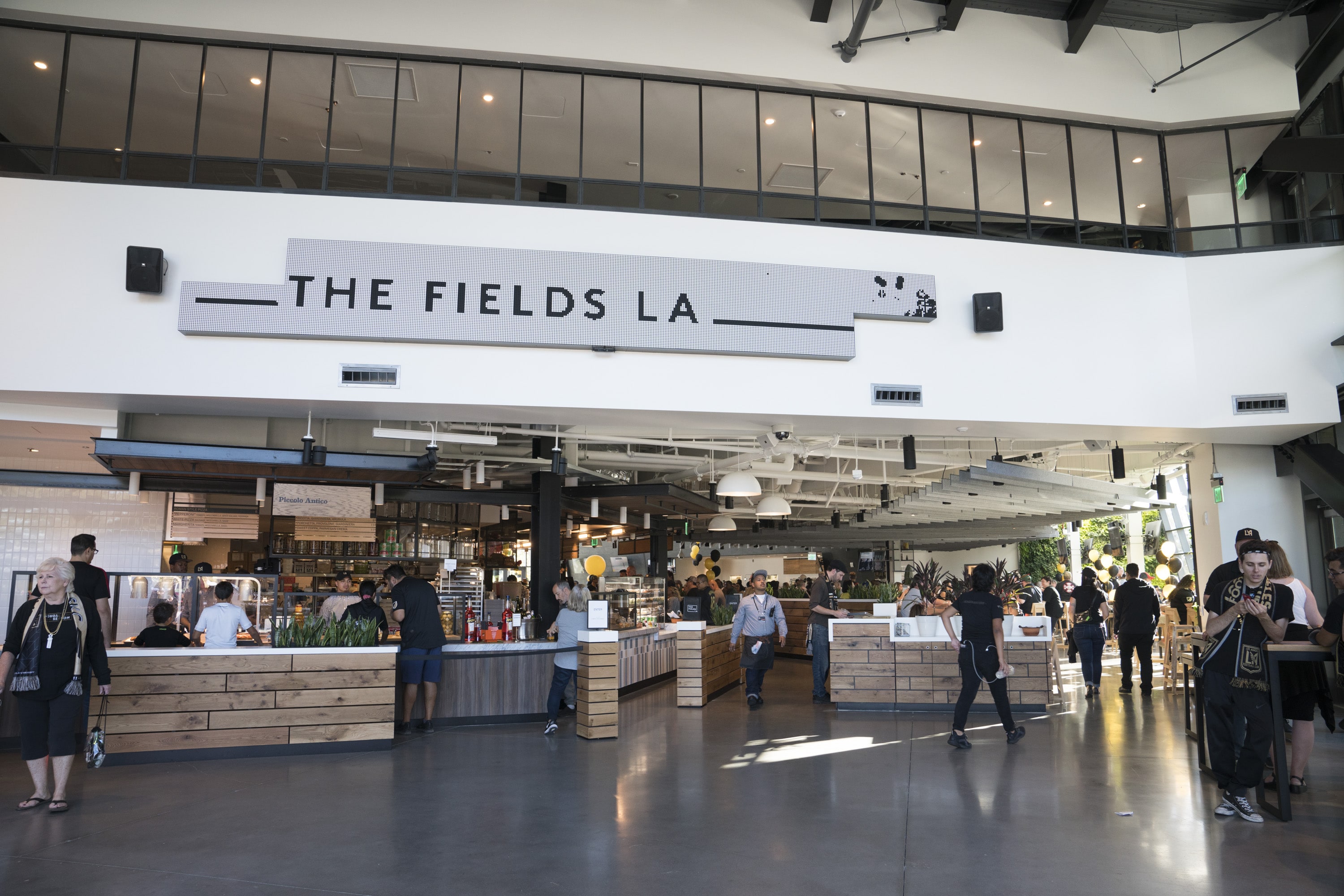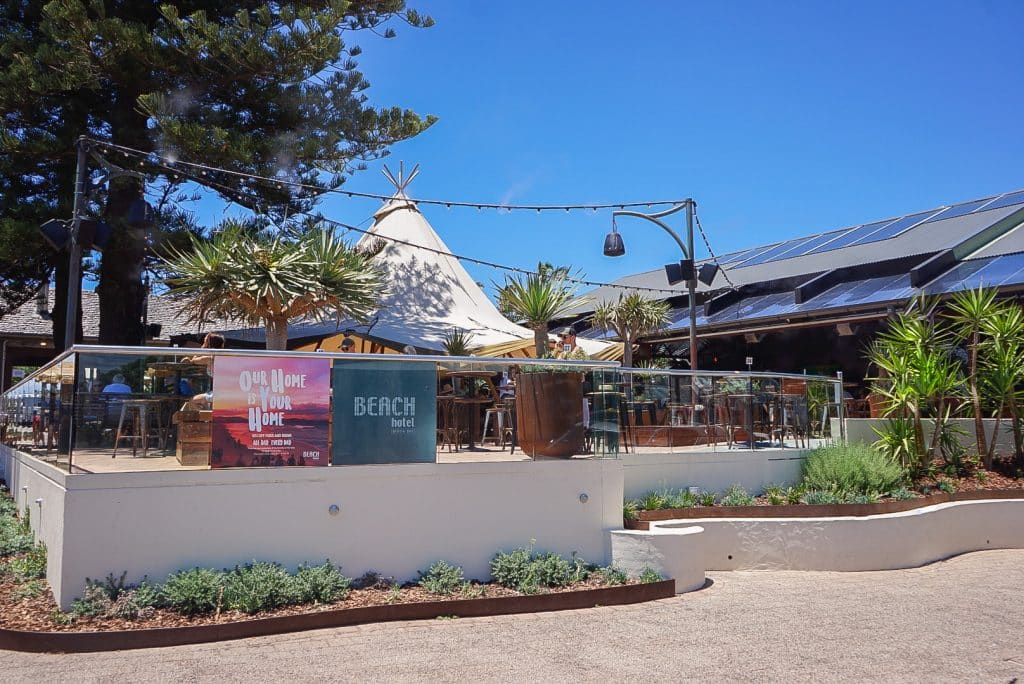
Kristin Sedej FCSI, of S20 Consultants, has worked on countless stadium and arena projects in her nearly 20-year career as a foodservice consultant, and no two projects are ever the same.
What makes this stadium project different, however, is the dual startup and historic nature of the development itself. As the first stadium to be built in Los Angeles proper since the Dodgers Stadium opened in 1962, the open-air, 22,000-seat Banc of California Stadium, home to the Los Angeles Football Club (LAFC), has contributed to an ongoing revitalization of the Exposition Park neighborhood at the south end of the city. It brings more entertainment options to surrounding residents and travelers from other parts of the state and country.
According to the US census, the median age of residents in the area was 26 in last year, with Latinos making up nearly 37% of the population compared to a roughly 50% Latino makeup for all of Los Angeles proper.
 Formed in 2014, the LAFC team (nicknamed ‘The Black and Gold’ by fans), are part of Major League Soccer (MLS). Head coach Bob Bradley, LAFC president and co-owner Tom Penn and general director John Thorrington say they are focused on nurturing homegrown talent, while also recruiting the best from other countries.
Formed in 2014, the LAFC team (nicknamed ‘The Black and Gold’ by fans), are part of Major League Soccer (MLS). Head coach Bob Bradley, LAFC president and co-owner Tom Penn and general director John Thorrington say they are focused on nurturing homegrown talent, while also recruiting the best from other countries.
LAFC came about after the dissolution of former soccer team Chivas USA, and the new project players took a grassroots approach to the investment and development of the new stadium. Completed just this past Spring, the monstrous Banc of California Stadium project counts comedian Will Ferrell, basketball star Magic Johnson and Golden State Warriors part-owner Peter Guber as some of its notable investors.
The group, with the help of Starbucks and other partners, was able to invest $350m for construction of the stadium. And Ferrell, though known for his hilarious antics on screen, couldn’t be more serious about the project as both his kids play soccer and his wife is a former college soccer star.
After a groundbreaking ceremony in August 2016, LAFC hosted its first game at the new stadium on April 29, 2018 against the Seattle Sounders FC, ultimately winning the match. The stadium, in addition to hosting regular soccer games, was also built as a concert and entertainment venue and will host some track and field events, as well as men’s and women’s soccer games, when Los Angeles hosts the 2028 Olympics.
 Foodservice development, of course, was a huge component of the project, according to Jon Muscalo, vice president of facilities for Legends Hospitality, which won the bid for the project that entailed an equipment of nearly $10m. With much of the marketing focus on Millennials and a younger, more food-focused market, Legends took a more chef-driven approach to the menu selection, partnering with local chefs to operate various concession stands and taking an all from-scratch approach with its suite and club foodservice.
Foodservice development, of course, was a huge component of the project, according to Jon Muscalo, vice president of facilities for Legends Hospitality, which won the bid for the project that entailed an equipment of nearly $10m. With much of the marketing focus on Millennials and a younger, more food-focused market, Legends took a more chef-driven approach to the menu selection, partnering with local chefs to operate various concession stands and taking an all from-scratch approach with its suite and club foodservice.
Upping the food game
“What we wanted to do was create foodservice spaces that would feature more of a restaurant-style menu as opposed to more traditional concessions,” Muscalo says.
This chef-driven approach is nothing new in the sporting segment, both Muscalo and Sedej say, as more stadiums, arenas and fields around the country continue to partner with both local and celebrity chefs to offer stepped up food and amenities as a bigger draw.
Even celebrity chef José Andrés, who developed some of the foodservice at the new, MLS soccer-focused Audi Field in Washington, DC, once said in an interview that these projects really are just “gigantic restaurants that happen to have NBA or other players there.”
 In addition to concession spaces, each with some remote cooking capabilities as well as well as three main clubs and catering services offered at the individual suites, fueled by a main production kitchen. As such, the equipment package included a combination of flexible equipment like combi ovens and ventless cooking equipment at the concession level to be able to cook more à la carte for a fresher, more authentic foodservice approach. As a LEED Silver-certified facility, energy efficient equipment also constitutes some of the total package.
In addition to concession spaces, each with some remote cooking capabilities as well as well as three main clubs and catering services offered at the individual suites, fueled by a main production kitchen. As such, the equipment package included a combination of flexible equipment like combi ovens and ventless cooking equipment at the concession level to be able to cook more à la carte for a fresher, more authentic foodservice approach. As a LEED Silver-certified facility, energy efficient equipment also constitutes some of the total package.
In the main kitchen, everything from the chili to barbecue dishes, hand-tossed pizzas to chicken wings are all made from scratch, requiring the installation of some action stations for live cooking as well as banquet-style equipment.
Two support kitchens at the third and fourth level offer also opportunities for some à la carte cooking and finishing for the suites. And then, even the service at the suites veers from what could be considered traditions of the past.
“We don’t just bring food to the suites and leave; the suites are constantly serviced with coursed dishes and foods throughout the entire game or concert,” Muscalo says.
 Sporting and entertainment projects like these that feed hundreds of thousands of people with varying types of foodservice outlets under one roof require an integrated, complex approach, beginning with determining the number of seats to then determine the number of points of sale and then determining the nature and location of all the amenities.
Sporting and entertainment projects like these that feed hundreds of thousands of people with varying types of foodservice outlets under one roof require an integrated, complex approach, beginning with determining the number of seats to then determine the number of points of sale and then determining the nature and location of all the amenities.
Foodservice consultants like Sedej have to think about where the food is produced and how it’s dispersed throughout the building at any given time – through elevators, carts, finishing kitchens and more. You might have season ticket holders who have access to higher-level foodservice operations as well as special event set-ups and intricate catering situations. Some facilities can handle more electrical, iron and exhaust capabilities more than others. And then, it’s about balancing the vision for a menu with the reality of what can be done and figuring out what equipment can accommodate all those needs.
“We take a very macro to micro approach with stadium and arena development,” Sedej says. “It’s like fitting pieces of a very complex puzzle all together.” Don’t even get her started on beer tap configuration and the beverage component of stadium development.
Health department restrictions
Other than an amazingly fast timeline, some of the bigger challenges of the project had to do with certain Los Angeles health department regulations. “We could not have any food preparation in an outside element without it being completely enclosed, so we had to completely close off the front of the house concession from the back of the house,” Sedej says.
This posed a problem for some of the indoor-outdoor suites where the operator wanted a semi-outdoor food buffet. To accommodate the vision within the constraints of the health department codes, Sedej worked with Legends to arrange for all the food to be served in the outdoor portion of the club to be wrapped completely for more of an individual meal, grab-and-go setup versus an open-air buffet line.
“They wanted build-your-own tacos in the outdoor space, but we couldn’t do it,” she says. “From an operator standpoint, it really limited them as to what they could do.”
In other cases, Sedej got a sliding glass wall installed so patrons could come in from the outside to the inside and enjoy a buffet while still enjoying some of the LA skyline.
There were also notable space constraints, and of course, financial limitations just like in any project.
 “When the project was started there was not a foodservice operator on board until halfway through the design,” Sedej (pictured) says. “That meant we had to work with Legends Hospitality well after the building design was completed and construction had already started.”
“When the project was started there was not a foodservice operator on board until halfway through the design,” Sedej (pictured) says. “That meant we had to work with Legends Hospitality well after the building design was completed and construction had already started.”
That meant a lot of extra meetings and creativity to meet the ambitious, chef-driven approach with the space and budget provided. “We also had to make it clear to the operator why we weren’t able to follow through on certain visions because of some of the health department codes,” Sedej adds.
Ultimately, through effective communication, Sedej’s team and Legends were able to reach a happy compromise and turn out what is proving to be a successful project. “Projects as complicated as these can take hundreds of people to get it right, but it was truly a collaborative effort,” she says.
The collaboration in the Banc of California Stadium project was the most enjoyable part for Sedej. “It’s fun to do a new construction project of this magnitude that has such a positive impact on the city and its architecture,” she says.
“It’s amazing to see a concept that started in someone’s head to becoming a fully-operational reality in just a few years. We all put our own stamp on the project.”
Amelia Levin
Photography: Victoria Wall Harris




